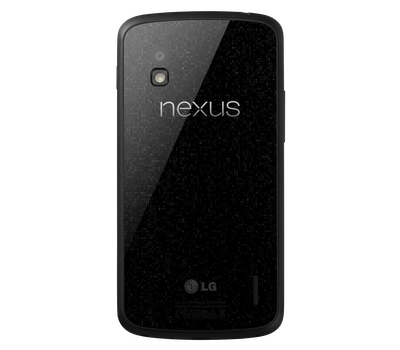After several personal experiences I’ve had recently, I’ve come to a general conclusion that there are two types of people when it comes to user interface changes: those who think “awww…neat!” with updates and changes, and those who say “if it wasn’t broke, why did you fix it?” Let me illustrate by telling two short stories about what I was involved with this week. As a side note, and as you’ll notice by the end of this article, I’m in the “awww…neat!” camp.
Google Maps Update
Several weeks ago, Google revealed at the I/O Conference that the desktop and Android versions of their famed and very useful app was redesigned from the ground up. I saw a few early screenshots, read some explanations of the new features, and got an overall sense that the changes would be huge, but would generally make the app better. While Google updated the desktop Maps, they would also update their Android version. Let me say that I really like Google Maps; I wouldn’t say that I’m quite a “power user”, but it has been highly useable for me, especially on my Nexus 4. I wondered what this big update would bring…
Then the actual update was rolled out yesterday. No, I wasn’t one of the first to get it; I must have been pretty far down the list for them to push the update to me. Before I was able to experience it myself, I read a bunch of reviews in the Play Store, as well as Google+, and the overall consensus seemed to be “if it wasn’t broke, why did you fix it, Google!?” Most of the complaints were the removal of features that many users found to be sooooo important (Latitude, Location History, cached maps). I have to be honest that I had mixed feelings about the update before I even had downloaded the update.
When I arrived home from work today, lo and behold, I received a notification on my phone about the Maps update. I downloaded it right before dinner, then decided to play around with it a little. What was my reaction? “Awww…neat!” This is not meant to be a review of Maps, but I have to say that I like the new user interface (I’ll just call it UI from now on) way better than the previous one. Did I ever use Latitude or Location History? No. Maybe if I had used them, I would be a little more disappointed; otherwise, I think I would still love it.
My Work’s Menu System Update
In the middle of May, I was assigned an enormous task of leading the charge to update the UI of my company’s 1000+ user intranet Warehouse Management System (all web-based). Specifically, I was going to update the navigation system. At first, the task seemed very daunting to me, but once I started seeing the rewards, I got pretty excited about it. I went through the whole development process, and eventually ended up with a working version in the QA system by mid-June. We let every-day users examine it, critique it, and try to break it, with a pretty positive end result.
Let me say that the UI is very different. The old version was designed in the early-2000’s (table grid layout, no CSS, frames within frames, etc.) and many users that have been with the company when the system first came out and are completely used to the old UI, though they have a lot of complaints about the functionality and inefficiencies. I knew the most difficult piece would not be the development and testing, but rather user satisfaction.
Again, the users who used the QA system enjoyed the new UI, but there were still hundreds of users that did not try it out. I took every possible effort to have face to face meetings with dozens of users, handed out lots of documentation, and even put out a quick tutorial right in the middle of the new UI. There was one strange thing I noticed after blind-testing some users who did not know an update was happening; I had them read through the documentation, explain the benefits and time they will gain with the new UI, and told them there were instructions right on the screen just in case. Deployment Day was this Tuesday.
We updated our system at 6:30 in the morning, just in between user shifts. It was amazing to see the variety of reactions from people. The first reaction from nearly everyone was absolute shock. Then the new UI seemed to divide the two groups of users: “awww…neat!” and “if it wasn’t broke, why did you fix it?”.
I would say that the “awww…neat!” group comprised about 70% of users. The “if it wasn’t broke, why did you fix it?” group comprised the rest. Talking to people, I didn’t find any correlation between age, techno-knowledge, or experience in relation to their reaction. Honestly, it just seems like there are two different types of people.
What Does All of This Mean?
Designers and developers change things for a reason. It is impossible to satisfy everyone. Look at Apple with the new “flat” design of their icons. Look at Google with their Gmail rework a few months ago, and Microsoft with Windows 8. You can throw my company into that as well with the UI update. Do you really think that they all change things just to make people mad, or that they don’t ask users what they want? Of course not. It’s all about adapting to new technologies, making workflows more efficient, and giving the vast majority of users a much more enjoyable experience.
I believe that Apple is probably the best at this. Steve Jobs would push his engineers to not just give people what they want now, but give them what they don’t even know they want yet. That attitude breeds innovation. Google did this with their new Maps upgrade as well. If they had simply given users what they wanted for this release, it would just be another addition to the ‘ol farmhouse. What did they do instead? They remodeled that farmhouse. They gutted out the asbestos, put in new drywall, tacked on brand new siding, and made the place better. Yes, dad might not know where his overalls went to, but he’ll find them hanging in a much better place than on the upstairs shower bar where they were before. That’s how user interface changes should be perceived.
With that said, designers and developers will always have dissatisfied users. I think it’s the person making the change’s job to not tell them they are just old legacy users and get over it, but try to bring them along with the new interface. For us users, before saying, “if it ain’t broke, why fix it?”, say “awww…neat!” instead with application changes.




 Next I moved to researching Straight Talk (they “piggy-back” on several major carriers’ towers). Their plans are technically only sold at Wal-Mart right now, but they claim unlimited data, text, and talk for only $45. That sounded pretty good to me. I did the math in my head, and even if I rounded up from the actual $90 a month to $100 a month, that would save us about $70! Over two years, that’s over $1,500!
Next I moved to researching Straight Talk (they “piggy-back” on several major carriers’ towers). Their plans are technically only sold at Wal-Mart right now, but they claim unlimited data, text, and talk for only $45. That sounded pretty good to me. I did the math in my head, and even if I rounded up from the actual $90 a month to $100 a month, that would save us about $70! Over two years, that’s over $1,500!